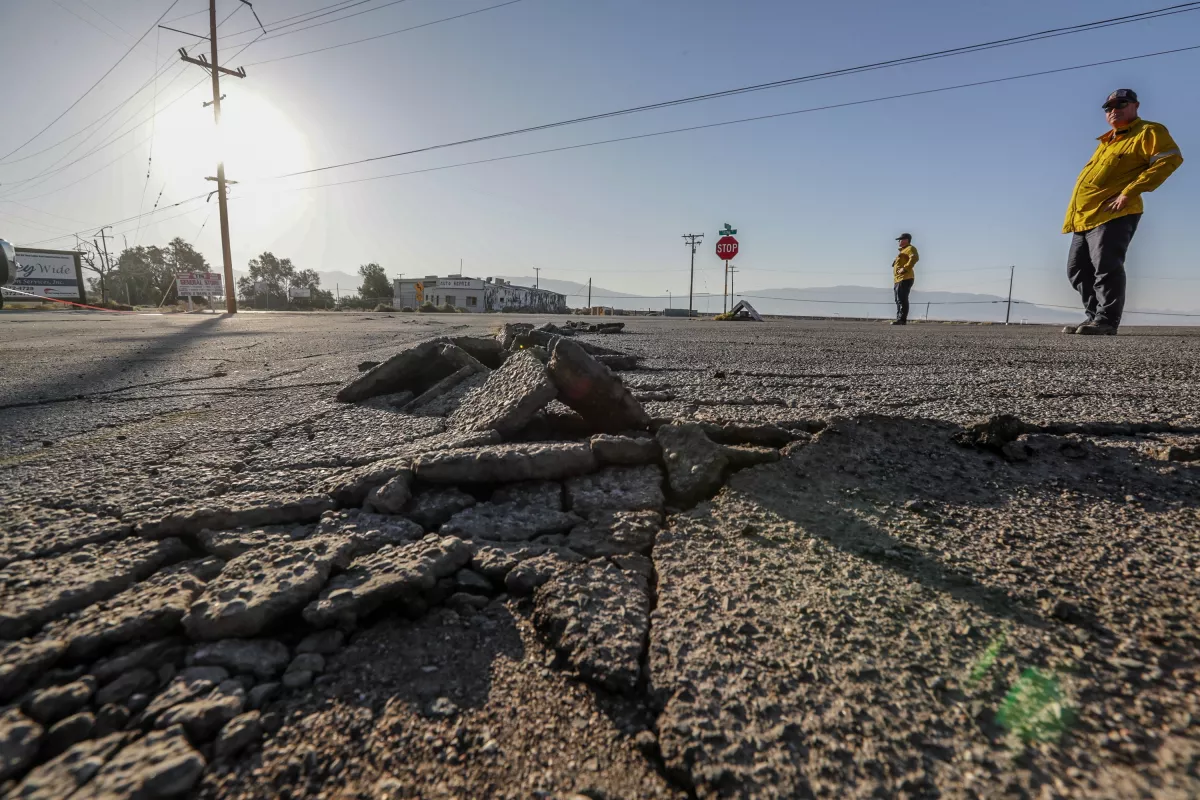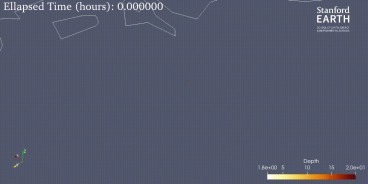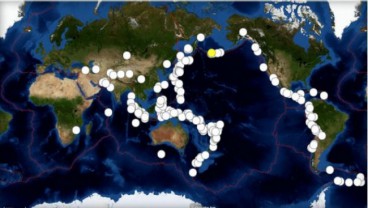Gravity signals could rapidly quantify the magnitude of strong earthquakes

After an earthquake, there is a disturbance in the field of gravity that happens almost instantaneously. In a new study, scientists observe and model the gravity-related signals stemming from this disturbance, proposing their use as a rapid estimate of the magnitude of strong earthquakes.
The disturbance in the field of gravity that follows an earthquake can be recorded before the direct seismic waves that seismologists usually analyze. In a study published in "Science" on December 1, 2017, a team formed of researchers from CNRS (Centre national de la recherche scientifique), IPGP (Institut de Physique du Globe de Paris), the Université Paris Diderot and Caltech (California Institute of Technology) has managed to observe these weak elastogravity signals and understand where they come from.
This work came out of the interaction between seismologists who wanted to better understand earthquakes and physicists who were developing fine gravity measurements with a view to detecting gravitational waves. Earthquakes change the equilibrium of forces on Earth and emit seismic waves whose consequences may be devastating. But these same waves also disturb Earth's field of gravity, which emits a different signal. This gravity-related signal moves at the speed of light, unlike tremor waves, which propagate at speeds between 3 and 10 km/s. So seismometers at a station located 1000 km from the epicenter may potentially detect this signal more than two minutes before the seismic waves arrive.
The work presented in this study follows on a 2016 study, which demonstrated these elastogravity signals for the first time. In the new study, scientists first observe these signals on the data from about ten broadband seismometers, located between 500 and 3000 km from the epicenter of the 2011 Tohoku earthquake (magnitude 9.1). From their observations, the researchers then demonstrated that these signals were due to two effects. The first is the gravity change that occurs at the location of the seismometer, which changes the equilibrium position of the instrument's mass. The second effect, which is indirect, is due to the gravity change everywhere on Earth, which disturbs the equilibrium of the forces and produces new seismic waves that will reach the seismometer.
Taking account of these two effects, the researchers have shown that this gravity-related signal is very sensitive to the earthquake's magnitude, which makes it a good candidate for rapidly quantifying the magnitude of strong earthquakes. The future challenge is to manage to exploit this signal for magnitudes below about 8 to 8.5, because below this threshold, the signal is too weak relative to the seismic noise emitted naturally by Earth, and dissociating it from this noise is complicated.
Source: ScienceDaily
Want to read more like this story?

Changes in magnetic field along fault lines preceded major earthquakes in California according to a recent case-study
Oct, 13, 2022 | NewsResearchers have tried for decades to determine whether there is a reliable precursor that can act...

Study suggests that smaller earthquakes generate most strong ground motions
Jan, 04, 2021 | NewsAccording to a new study, smaller earthquakes have caused the strongest shaking incidents in the vi...

New AI method to detect microearthquakes
Dec, 07, 2020 | NewsScientists from Stanford University and Georgia Institute of Technology in the United States, intro...
Gravity
Apr, 21, 2020 | EducationThe Gravity geophysical method is mostly used for oil exploration. It is based on the fact that th...

Big earthquakes have become more frequent - scientists fail to interrelate them
Jul, 03, 2014 | NewsBased on a new study conducted by the U.S. Geological Survey (USGS), in the first quarter of 2014 st...

Earthquakes triggered by landslides
Jul, 02, 2020 | NewsIt is widely known that earthquakes can trigger disastrous landslides but, what about the opposite?...

New research shows how faults warn us before a big earthquake
Jan, 14, 2014 | NewsA new research published in the Geophysical Research Letters journal last November, provid...

New study shows that seasons affect the impact of earthquakes
Nov, 19, 2019 | NewsAccording to a new study, recently published in Seismological Research Letters, the season an earth...

SPAS 201 v.4.0 – Seismic analysis software
Jun, 13, 2023 | SoftwareOn This Day
April 18th 1945
READ MORE
Trending

Rockfall in South African gold mine: 4 workers dead

The quicksand of Morecambe Bay

History of the Hoover Dam

Join GeoWorld's 2024 Geotechnical Business Directory today!




